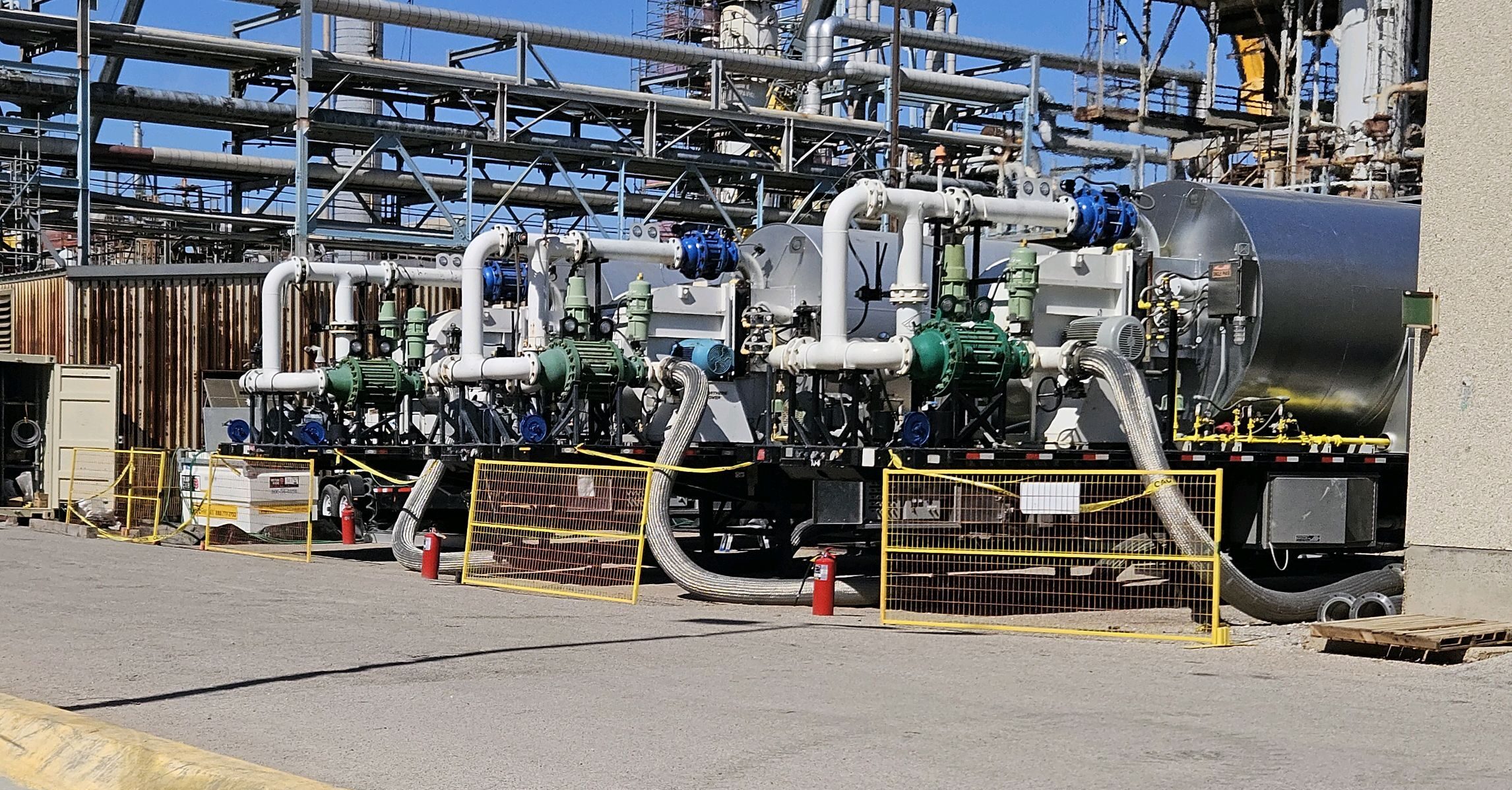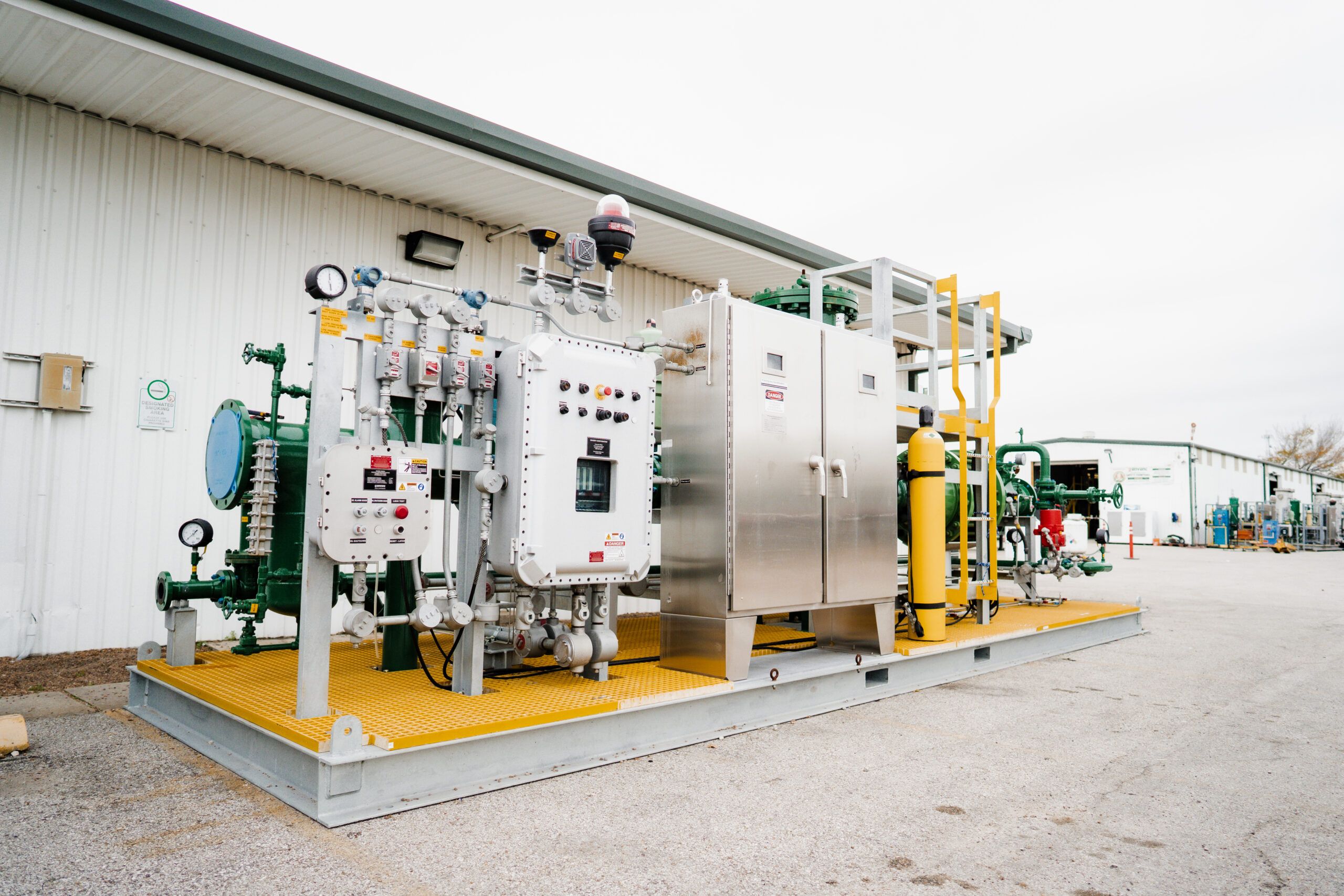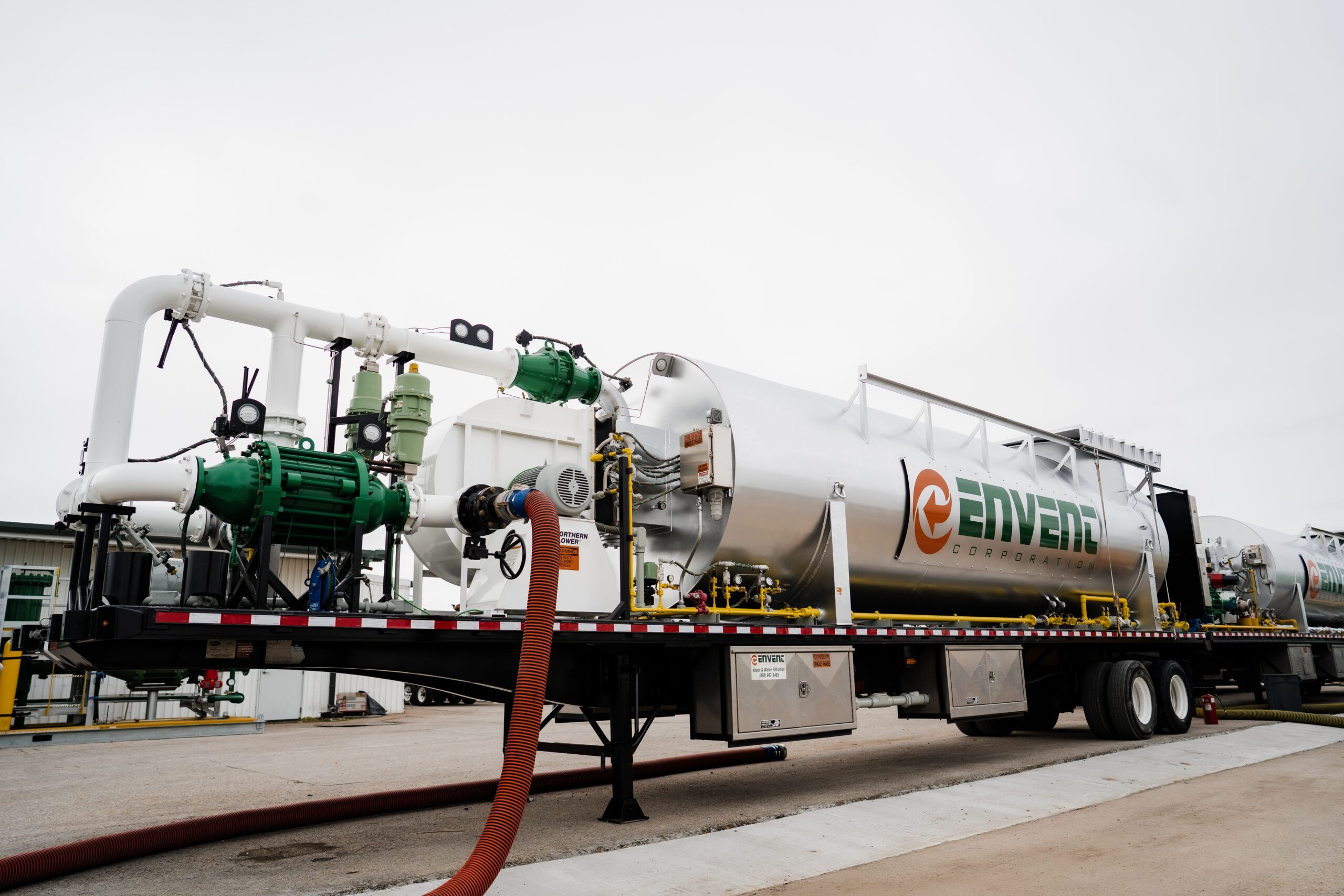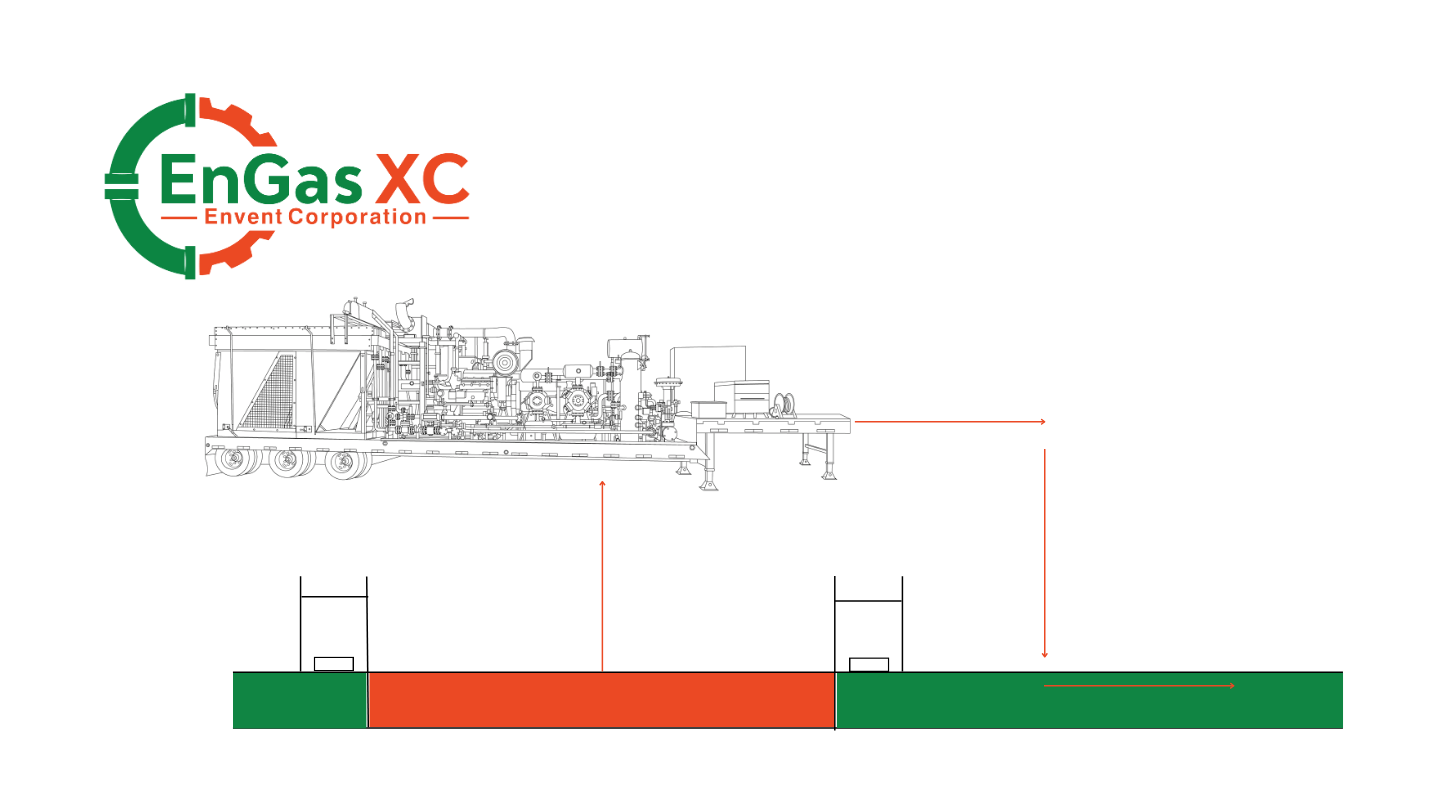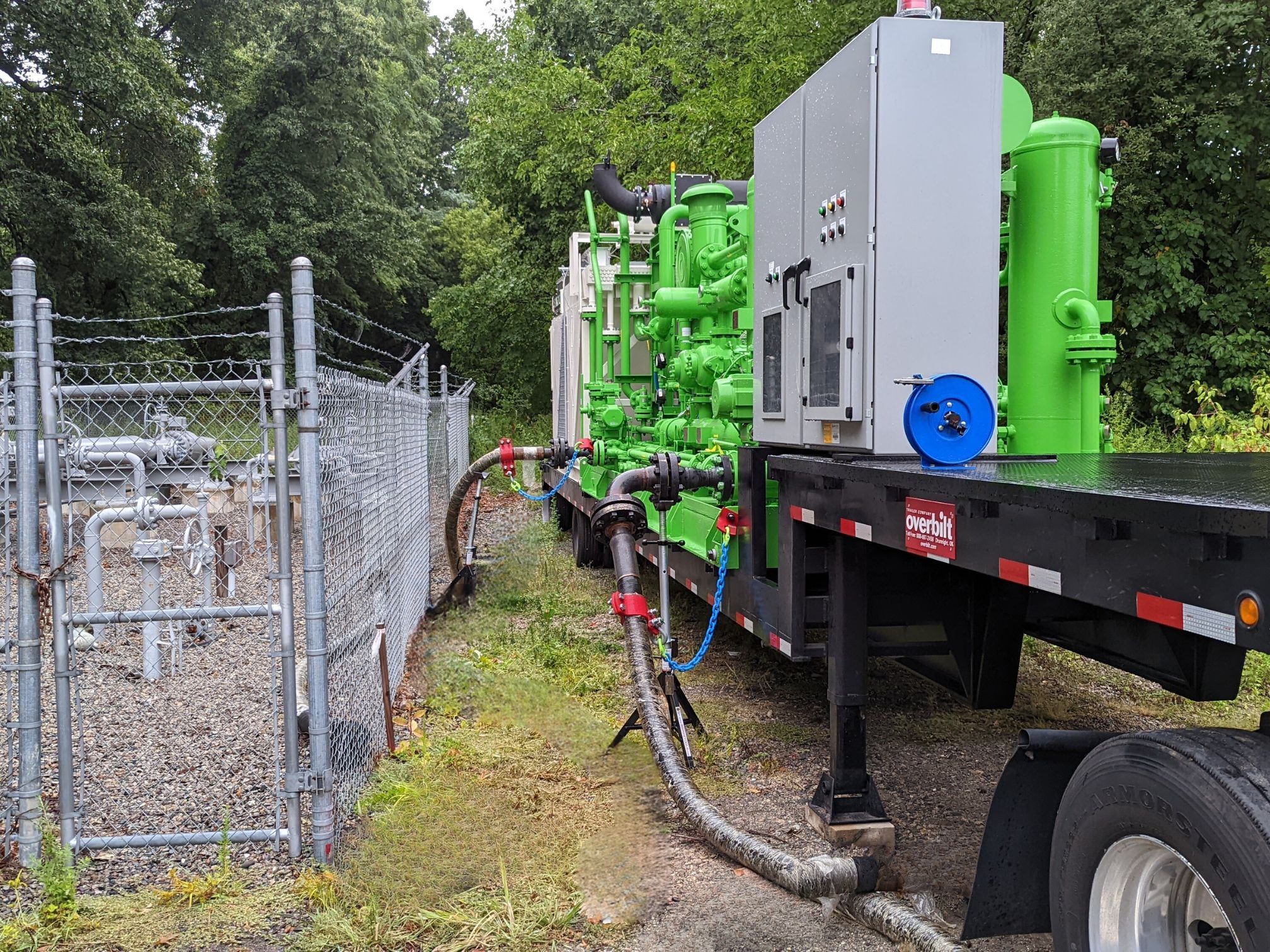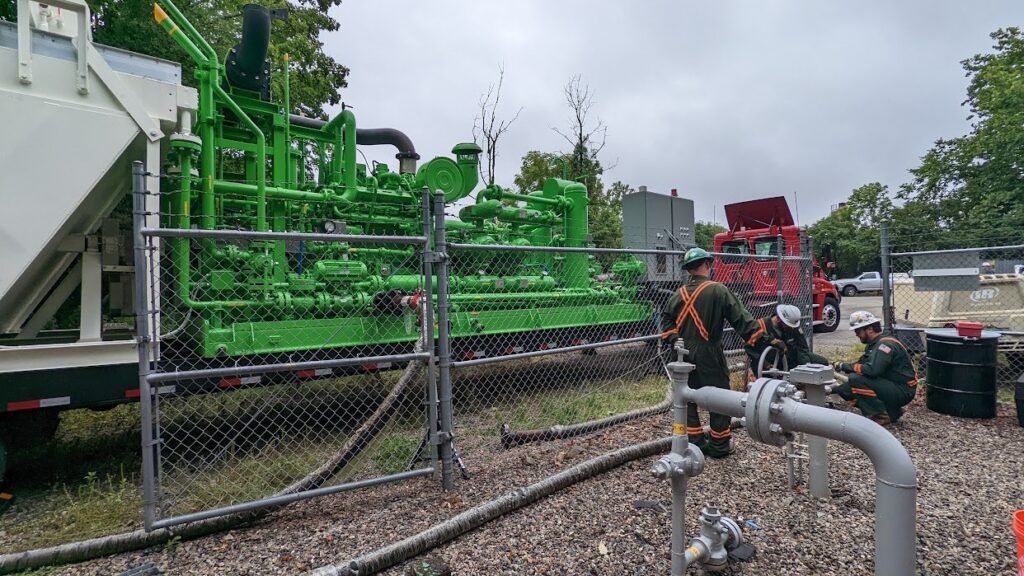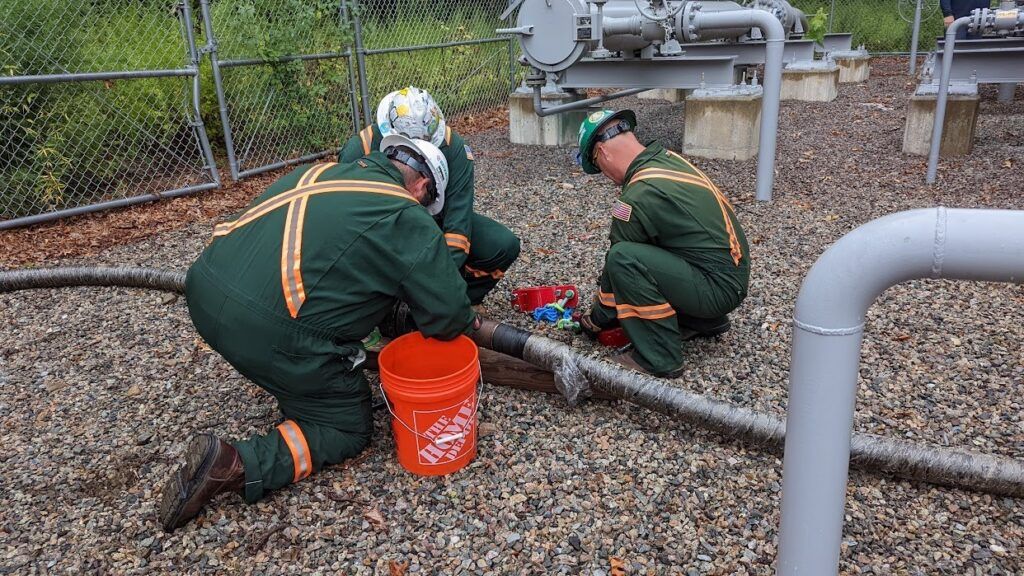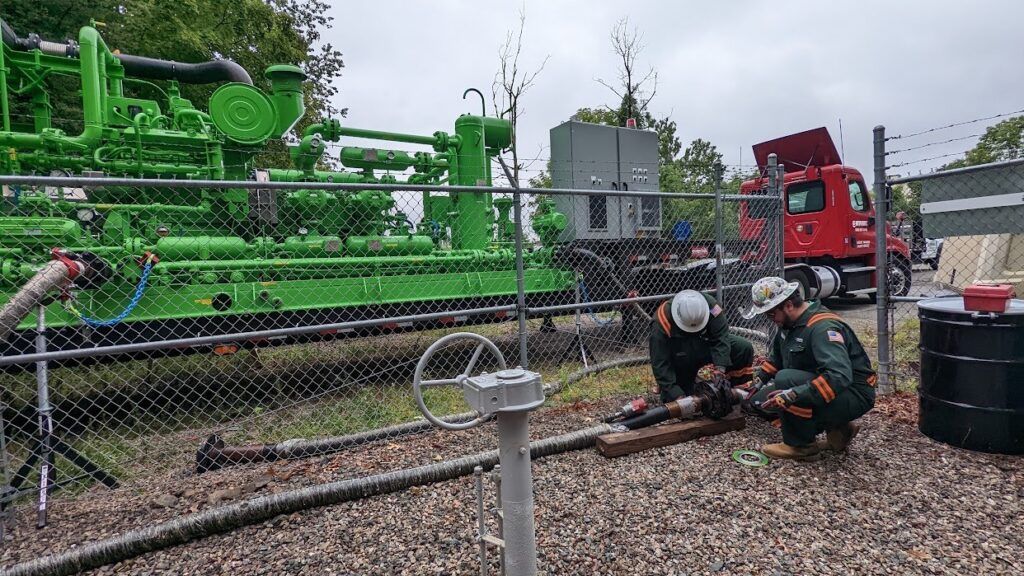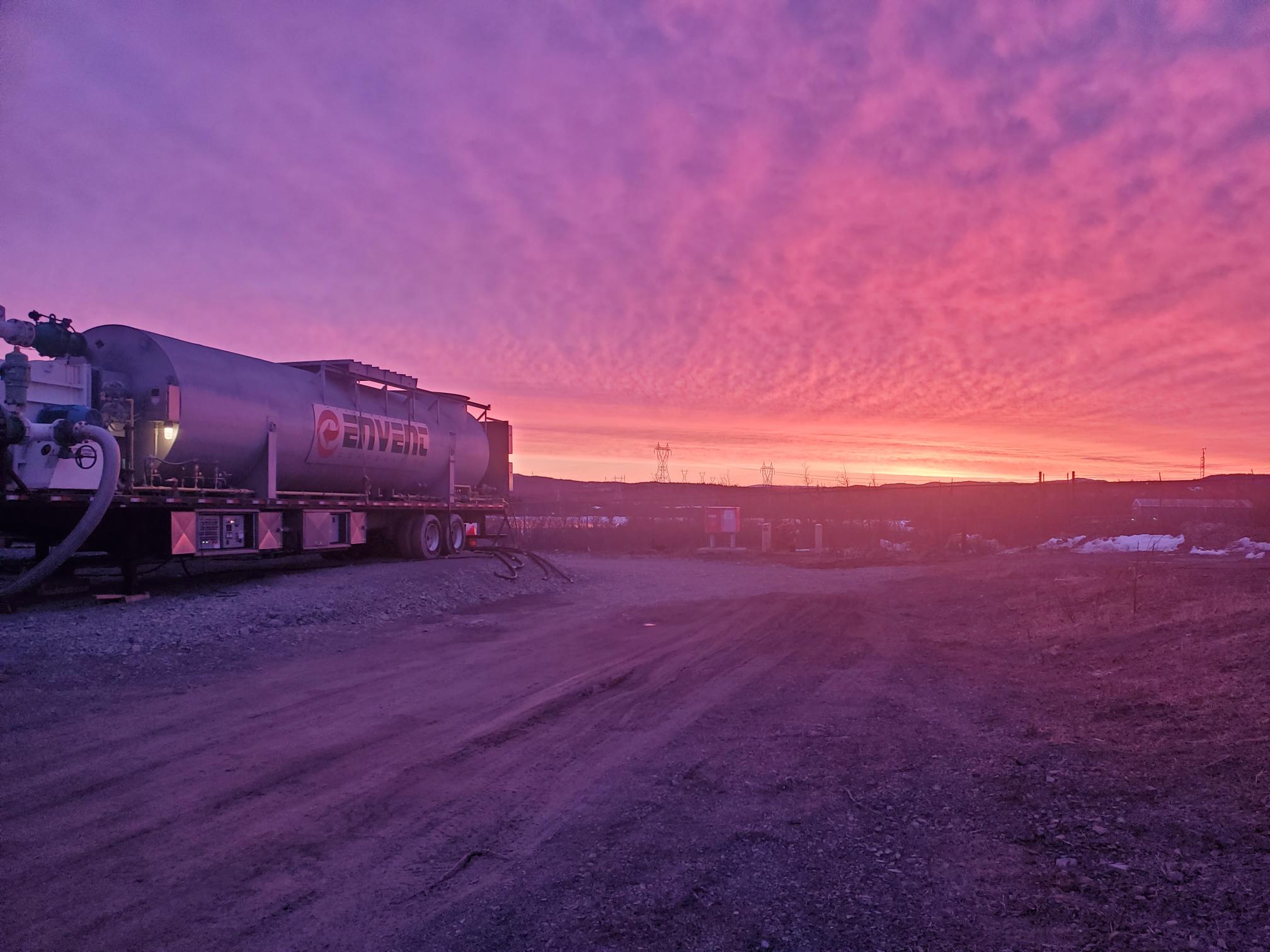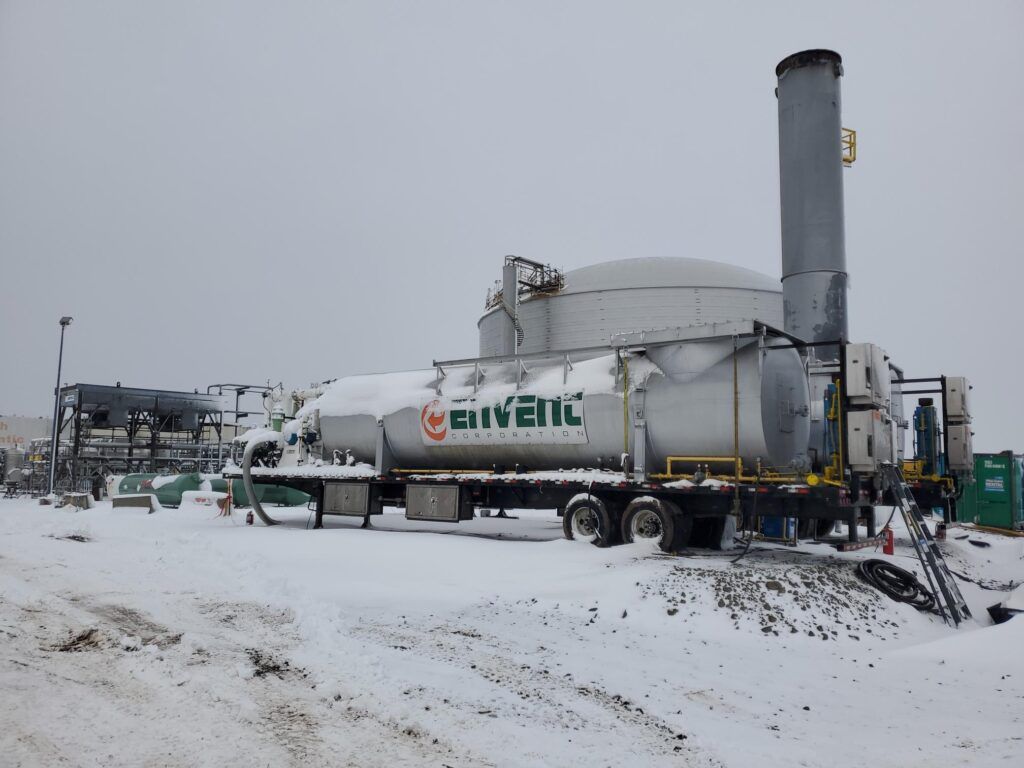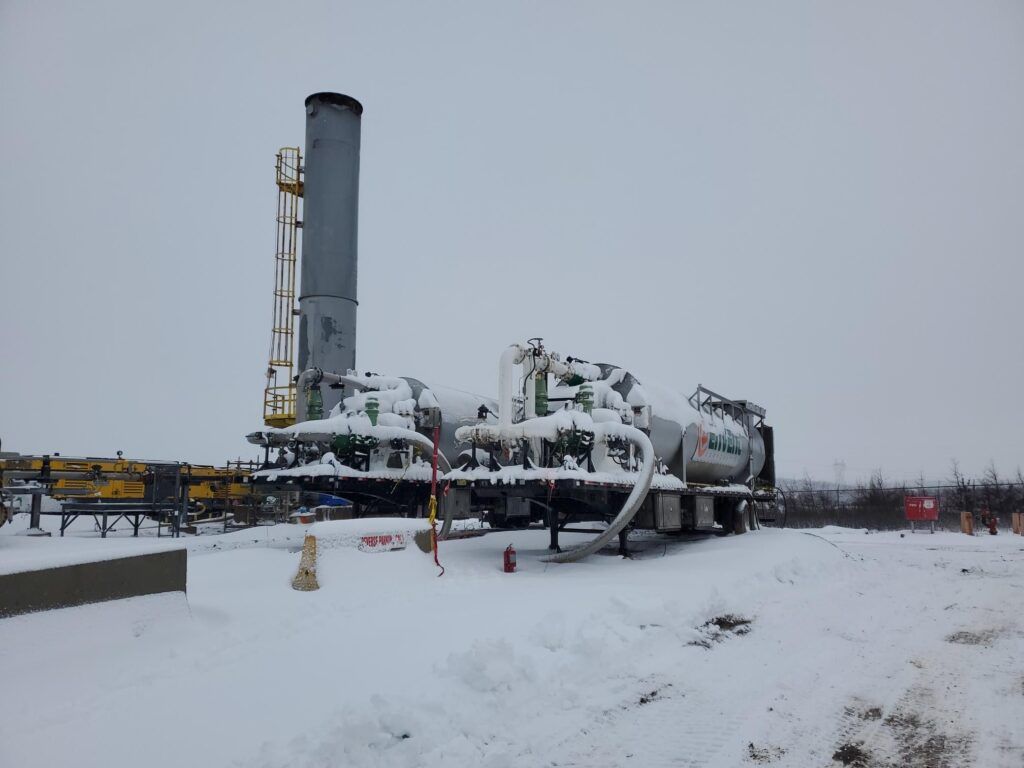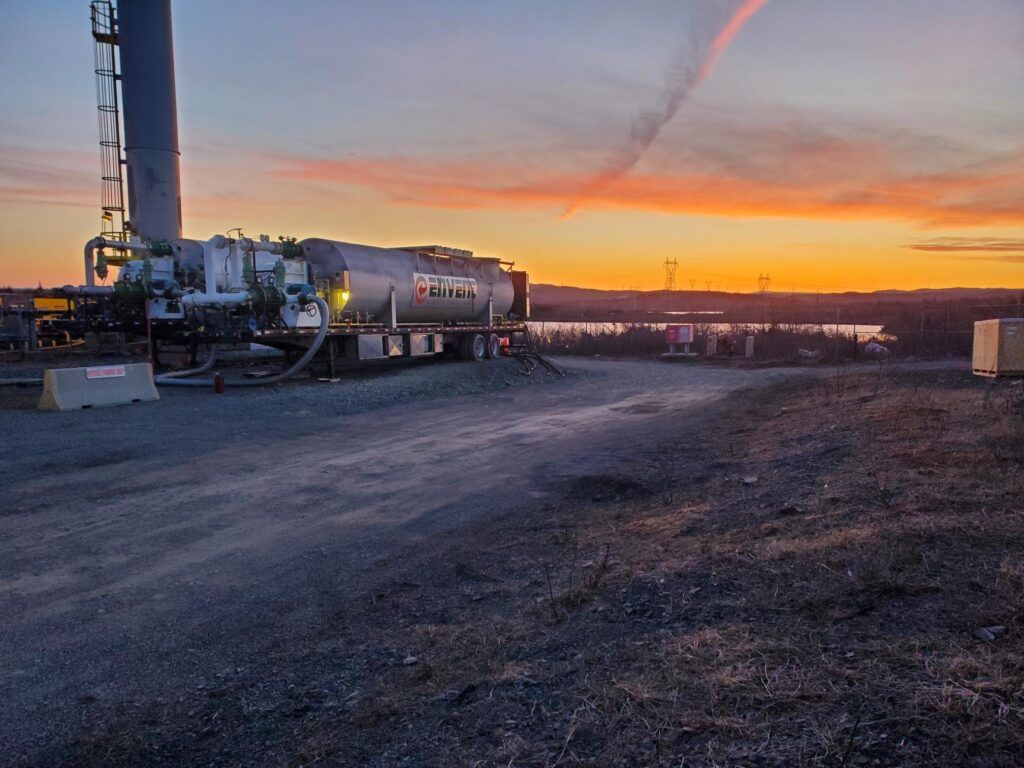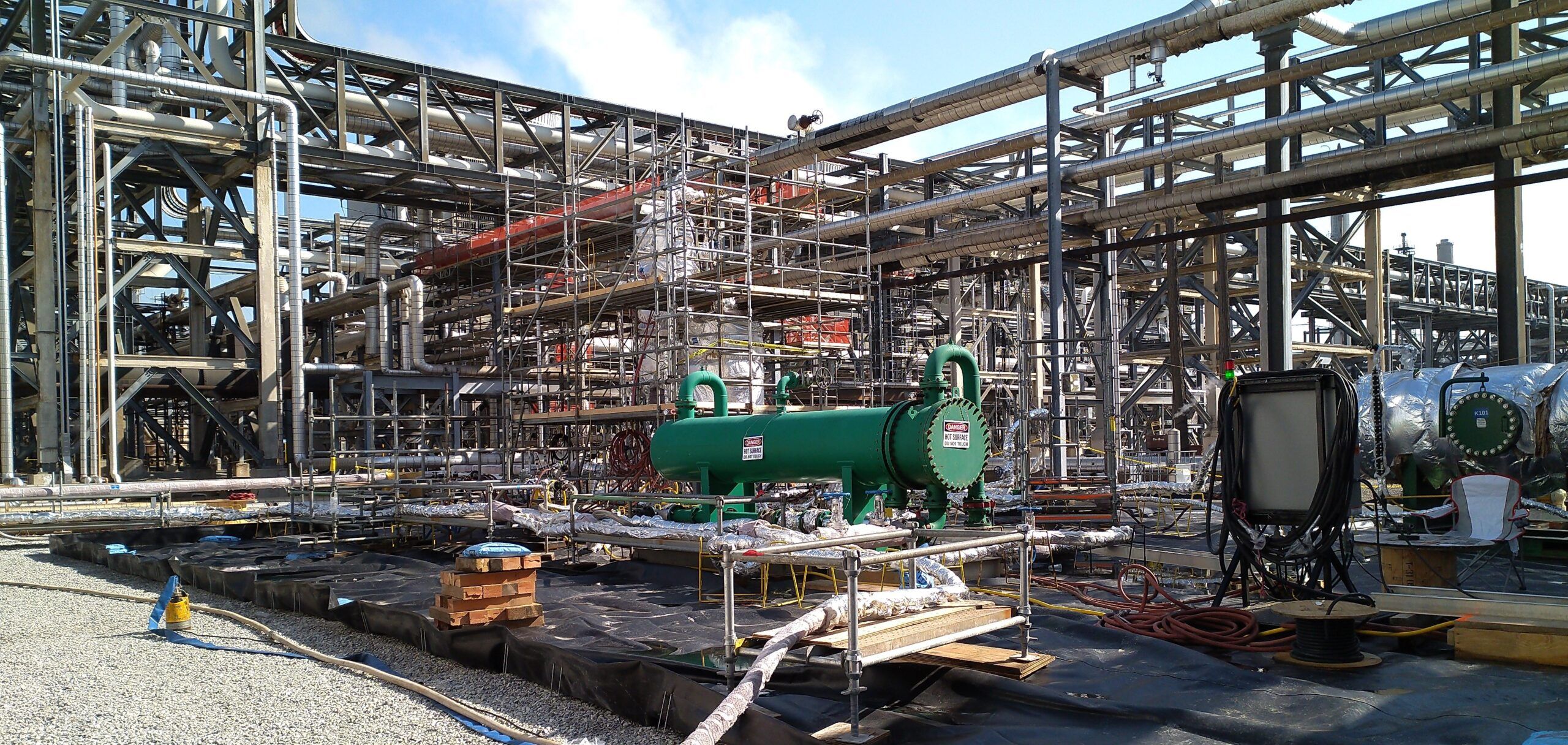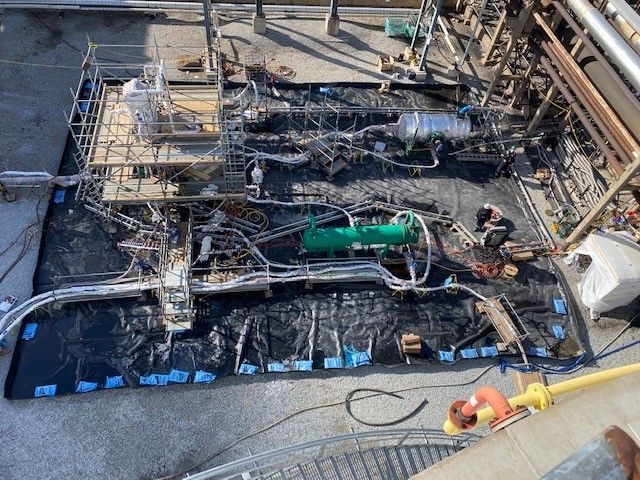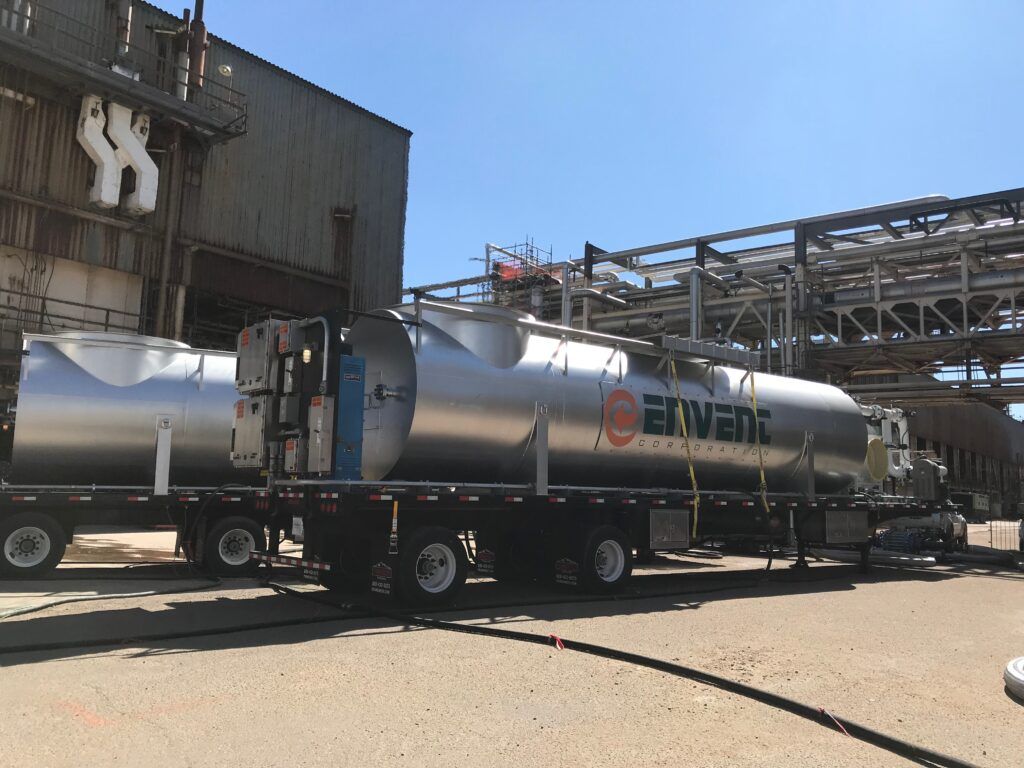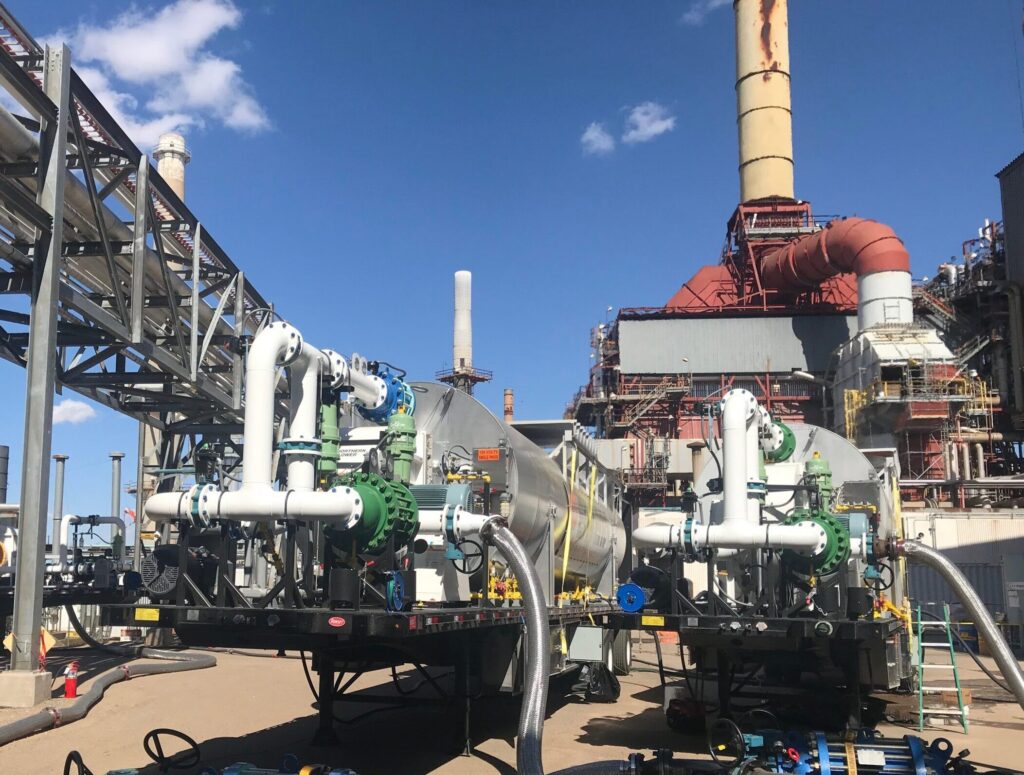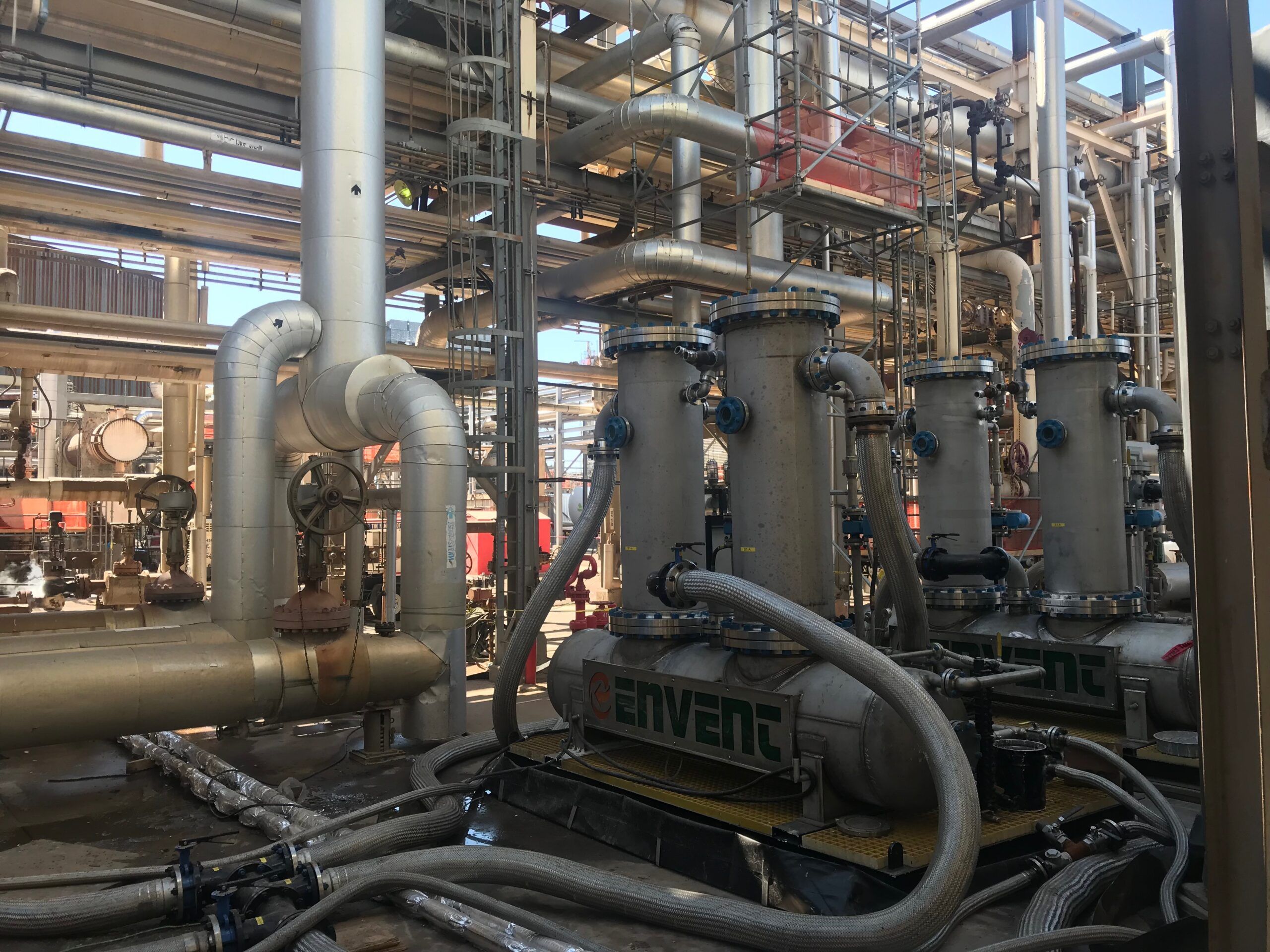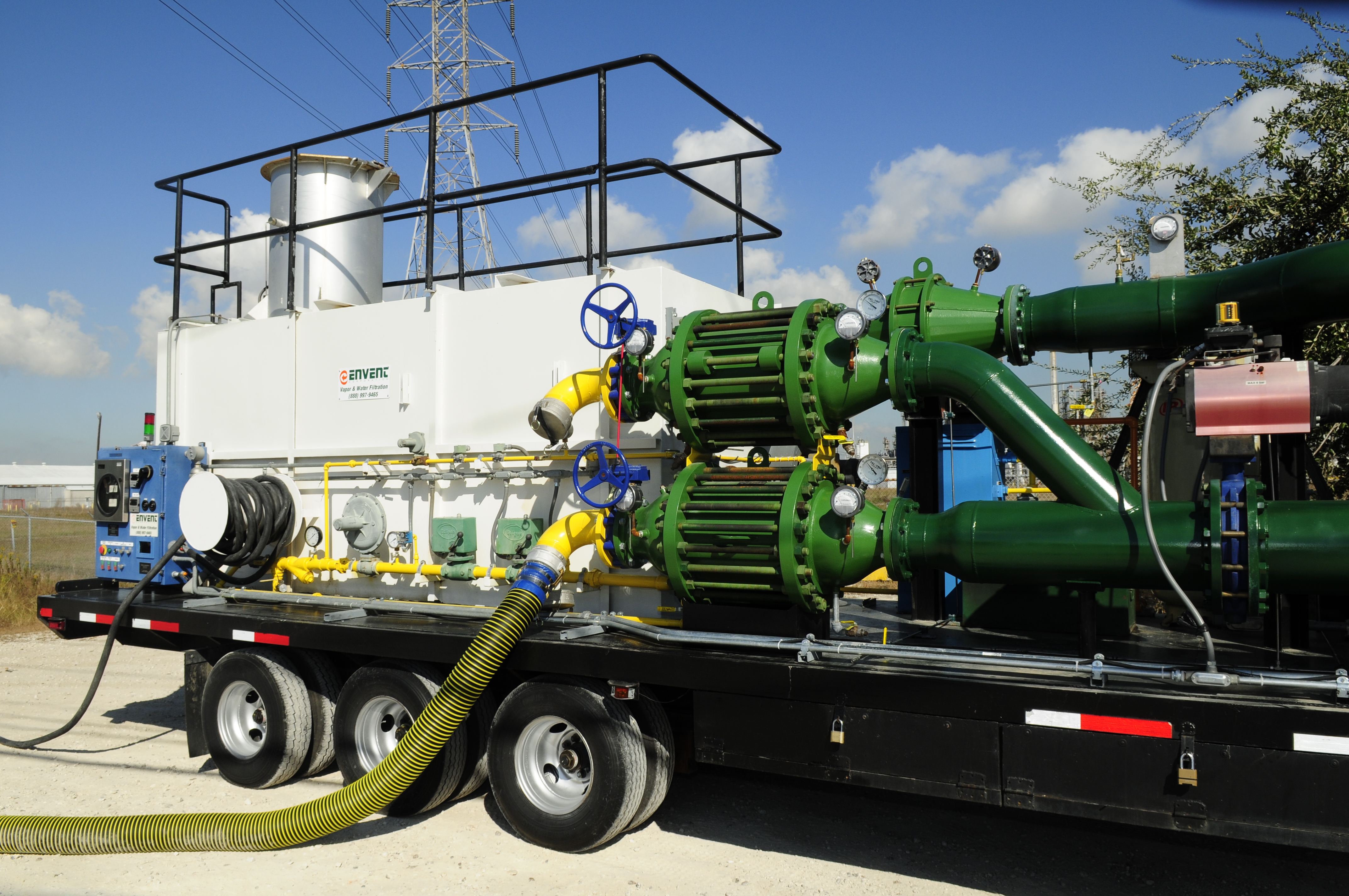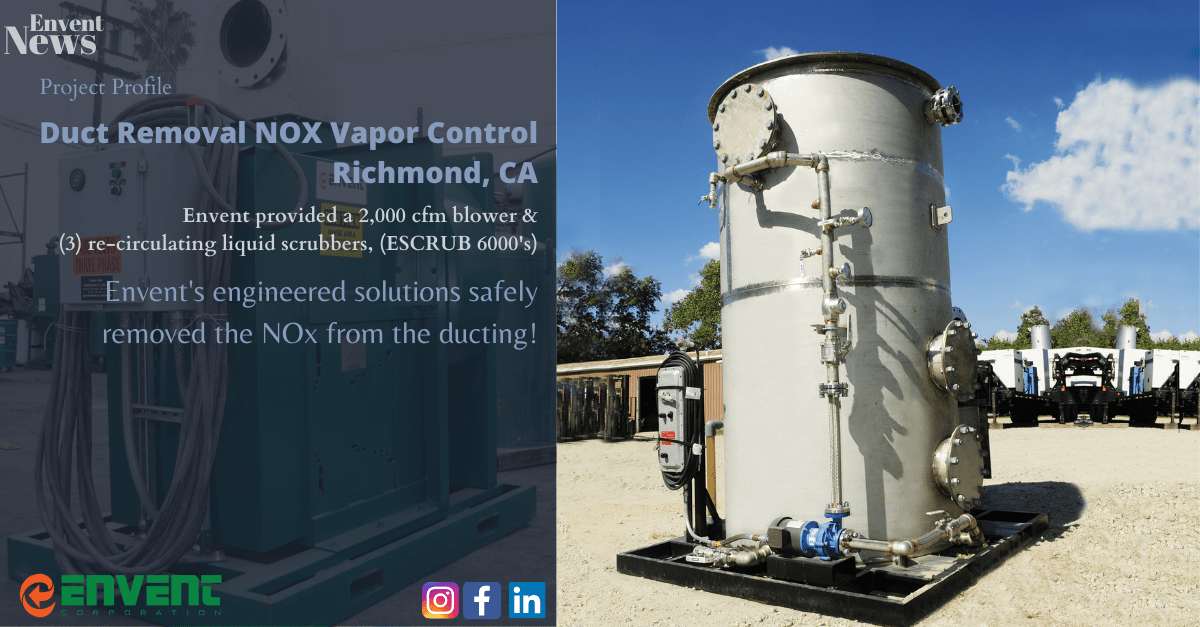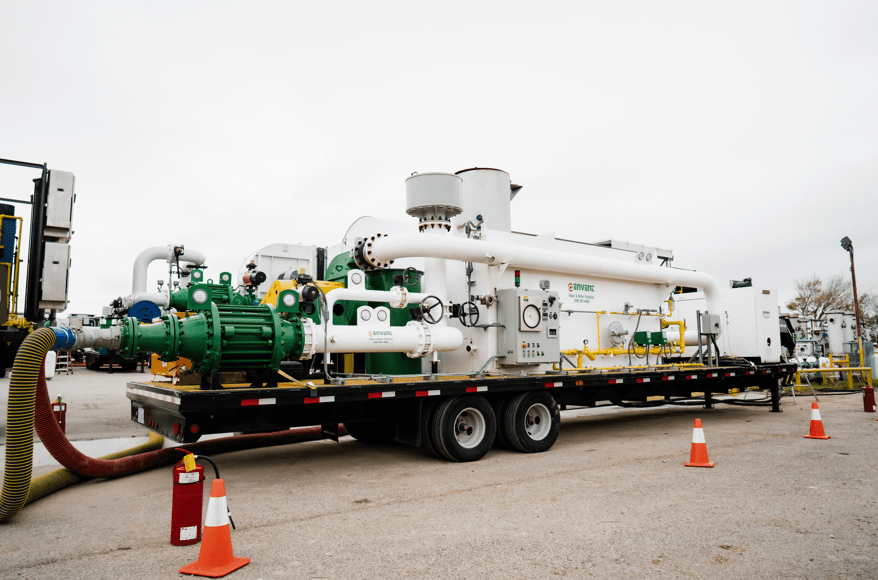
Challenge
A customer facility had two large runoff tanks filled with several million gallons of high pH water associated with groundwater remediation. The customer wanted to drain both vessels to make room for additional wastewater, but each tank’s contents would need to be treated to a neutral pH prior to discharge. Additionally, sulfur precipitates in the wastewater posed an H2S risk as any treatment option would liberate it from solution. A vapor control system would be required to manage odor control and any off-gassing to minimize hazardous emissions.
Solution
Envent Corporation would provide this customer with an acid injection system for pH control as well as an industrial degassing thermal oxidizer system to manage H2S vapor control and other VOC vapors.
The injection system would recycle water from a low point connection back into a top location on the tank. In this process loop, Envent would inject a sulfuric acid solution directly into the wastewater. The treated wastewater would be pumped through an inline static mixer to promote an increased reaction in the water so pH could adjust more effectively. Envent would continue to recycle and treat the wastewater while taking pH readings to project tank health. Once a neutral range pH was achieved, the injection system was cut off and the tank was recirculated until the customer was satisfied.
On the vapor side, the reactions caused by adding acid into solution liberated H2S and other VOCs. To treat these vapors, Envent used a EMTOS thermal oxidizer paired with an recirculating caustic H2S vapor scrubber to treat and combust vapors. The caustic solution would neutralize H2S in quantities up to 60,000 ppm for the duration with zero emissions on the outlet. Any remaining vapors passed into the EMTOS thermal oxidizer for combustion with a 99.9% destruction rate efficiency. The vapor control system remained active as long as the tank continued to be circulated.
Benefit
Through this process, Envent Corporation was able to treat each tank’s wastewater to a pH level that was suitable for discharge. This allowed for future storage in each vessel for other customer project activities. Additionally, Envent’s vapor control system was able to mitigate hazardous off gasses and significantly reduce emissions from the tank. Envent was able to provide a turnkey solution to the issue at hand while working safely and efficiently to reach the customer goals.
